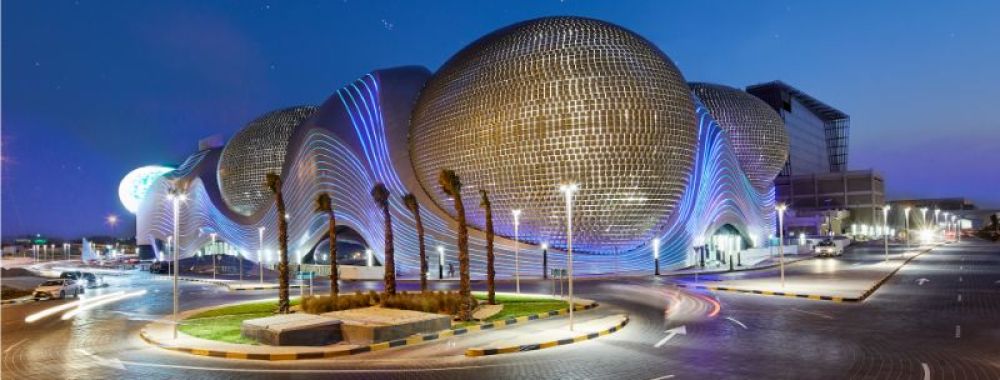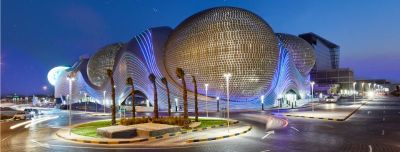

The Kuwait Towers are one of Kuwait City's most iconic landmarks. This architectural wonder, designed by Swedish architects, features a group of three slender towers that are noticeable from a distance. Visitors can ascend to the main tower's observation deck, which offers an unparalleled 360-degree view of the city and the Persian Gulf. The experience is educational and enjoyable, perfect for families and solo travelers alike. The decor inside the towers is as impressive as the exterior, with intricate mosaic patterns adorning the walls. The observation deck is an ideal spot for photography enthusiasts as it provides the opportunity to capture the sprawling urban landscape below. During the evening, the towers are lit up, providing a stunning spectacle. A visit usually takes around 1 hour to enjoy the views and maybe indulge at the cafe or restaurant located at the top.
Al Shaheed Park, located in the heart of Kuwait City, holds the title as the largest urban park in Kuwait. Beyond lush greenery and walking trails, it is home to two museums: The Habitat Museum and the Memorial Museum. The Habitat Museum presents the biodiversity of the desert environment, offering an insightful journey through various natural habitats found in the region. It's an enlightening experience that educates visitors about local wildlife and ecosystems through interactive displays. The Memorial Museum, meanwhile, pays homage to Kuwait's history with a focus on the Iraqi invasion of 1990. It tells the story of resilience and recovery through a mix of exhibits, making it a poignant reminder of the nation's past struggles. Visitors typically spend around 1-2 hours exploring the museums, reflecting on history, science, and the beauty of nature.
The Grand Mosque of Kuwait is the largest mosque in the country, capable of accommodating over 10,000 worshippers. A guided tour here is a cultural immersion, as visitors learn about Islamic architecture, art, and religious practices. The mosque boasts intricate Islamic calligraphy, grand chandeliers, and expansive marble floors. A tour guide provides insights into the mosque's design and Kuwait's Islamic heritage, while also explaining the principles and pillars of Islam. Non-Muslim visitors are welcome, and appropriate attire is provided to ensure cultural respect. Tours are not only educational but also offer a peaceful retreat from the bustling city life. The experience can last from 1 to 1.5 hours, including time for questions and contemplation within the serene environment of this magnificent religious site.
The Scientific Center of Kuwait, situated along the waterfront, is renowned for housing one of the largest aquariums in the Middle East. It takes visitors on an enchanting journey through three different environments: the desert, the coastal edge, and the sea. The marine life on display is both exotic and diverse, ranging from small reef fish to large sharks and rays. The layout is designed to educate visitors about local marine ecosystems and conservation efforts. Alongside the main aquarium, there are additional attractions such as an IMAX theater and a dhow harbor displaying historic ships. The broad array of exhibits makes it a favorite among families and marine life enthusiasts. A typical visit can take 2-3 hours if one immerses in all the exhibits and maybe catches a movie at the IMAX.
Failaka Island is one of the most unique and historical places to visit near Kuwait City. Accessed by ferry, the island offers a glimpse into Kuwait's ancient and contemporary history. It is home to archaeological sites dating back to the Bronze Age as well as the remains of the Persian Gulf War. Today, visitors can explore the island's past through tours that showcase old buildings, museums, and even a boat ride through the abandoned town. The island also provides opportunities for recreational activities like swimming and jet skiing. A full day trip is recommended to experience everything the island has to deliver, from historical exploration to relaxation on its serene beaches. The contrast between the ancient ruins and the modern-day leisure facilities makes the excursion a fascinating blend of a bygone era and present-times enjoyment.
The Avenues is the largest shopping mall in Kuwait and among the largest in the Middle East, making it a premier destination for retail therapy. The mall's architecture is impressively divided into different districts, each with its own unique character, including the Prestige, the Grand Avenue, and the Souk. With more than 800 stores offering a wide range of products from luxury brands to affordable fashion, electronics, and home goods, The Avenues offers a comprehensive shopping experience. Apart from retail, the mall is a culinary hotspot with over 100 cafes and restaurants serving cuisines from around the globe. Additionally, entertainment options such as cinemas and an indoor theme park are available for visitors. A typical visit can last anywhere from 2 to 5 hours, making it a perfect way to spend a day, whether you're interested in shopping, dining, or entertaining.
The Mirror House in Kuwait City is a private residence turned museum, owned and operated by artist Lidia Al-Qattan. The house is covered entirely with mirror mosaic, creating a dazzling, reflective experience both inside and out. Each room carries a different theme, blending art with storytelling in a unique fashion. Visitors enjoy a guided tour by the artist or her family members, who share the inspiration behind the artworks and the story of how this unique project came to life. The Mirror House stands as a testament to personal creativity and unconventional art. Art enthusiasts and curious travelers can expect to spend around 1 to 1.5 hours marveling at the intricate designs and learning about the making of this extraordinary house of art.
Souq Al-Mubarakiya is the traditional market of Kuwait City, offering visitors an authentic experience of Kuwaiti culture and history. The souq is a labyrinth of shops selling everything from spices, textiles, and handicrafts to perfumes and jewelry. Visitors can explore the various alleys filled with distinct aromas, vibrant colors, and the sounds of merchants calling out their wares. The market also features several eateries where traditional Kuwaiti dishes and Middle Eastern specialties can be savored. Exploring the souq can feel like a journey back in time, as some of the shops have been operating for generations. Cultural enthusiasts often spend 2-3 hours here, immersing in the local lifestyle, shopping for souvenirs, and enjoying a sumptuously authentic meal.
The Kuwait National Museum serves as a cultural beacon showcasing Kuwait's heritage and art. It consists of four main buildings, with exhibits spanning from archeological artifacts from the Failaka Island to Islamic art, as well as displays depicting Kuwait's maritime history. The museum has also dedicated a space called the 'Planetarium' for those interested in stargazing and astronomy. Although the museum was severely damaged during the Gulf War, it has been partially restored and reopened for public viewing. The museum offers an educational experience suitable for history aficionados and those looking to understand the country's past and its development into a modern state. Expect to dedicate 2 hours to thoroughly engage with the extensive collections and exhibits that narrate the story of Kuwait's evolution.
Al Kout Beach Marina is a pleasant coastal development where visitors can enjoy a leisurely walk along the marina, take in the sea views, and watch boats bobbing on the water. The area is lined with cafes, restaurants, and retail shops, creating a vibrant atmosphere. It's a perfect spot for an evening stroll, especially during sunset when the sky is painted with hues of purple and orange. Visitors can also indulge in various water activities such as boat trips or simply relax in the cool sea breeze. Family-friendly and serene, the marina offers a relaxed experience, inviting strollers to spend anywhere from 1 to 3 hours soaking up the waterfront ambience, dining al fresco, or shopping in the nearby boutiques.
